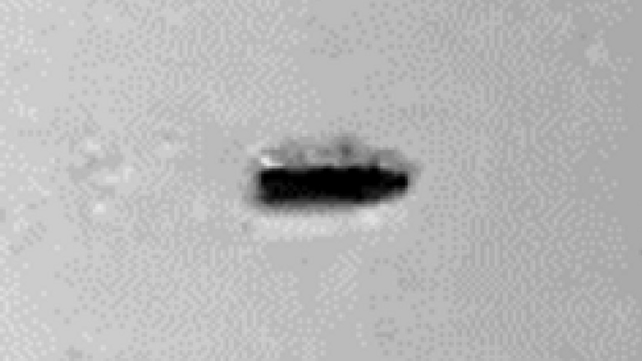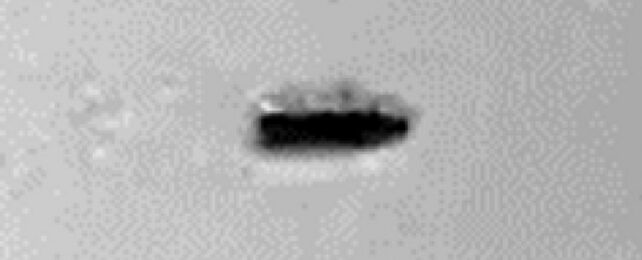In response to a new report from an independent panel, NASA says it has appointed a director in charge of research into UFOs — now known as unidentified anomalous phenomena, or UAPs — and will work with other agencies to widen the net for collecting UAP data.
"This is the first time that NASA has taken concrete action to seriously look into UAP," NASA Administrator Bill Nelson said today during a news briefing at NASA's headquarters in Washington.
NASA initially kept the name of its UAP research director under wraps, but later in the day, the agency identified him as Mark McInerney, who has previously served as NASA's liaison to the Department of Defense on the UAP issue.
Nelson downplayed the idea that aliens were behind any of the anomalous phenomena recorded to date, but he pledged to keep an open mind.
"I think it's important that you hear this word for word," he said. "The NASA independent study team did not find any evidence that UAP have an extraterrestrial origin, but we don't know what these UAP are. The mission of NASA is to find out the unknown. I've said several times in my comments here today that we at NASA deal openly, and we will be transparent on this."
When he was asked whether NASA would actually share any evidence of an extraterrestrial cause, he replied, "You bet your boots we will."
In a news release, Nelson said McInerney would work on the implementation of the agency's vision for UAP research, "including using NASA's expertise to work with other agencies to analyze UAP and applying artificial intelligence and machine learning to search the skies for anomalies."
Cross-agency cooperation and the use of AI to make sense of UAP sightings were among the leading recommendations in the independent panel's report, which followed up on months of fact-finding. The 16-member panel also said NASA could set up new tools to collect sighting reports from the public.
"The panel envisioned a framework that leverages crowdsourcing, possibly via smartphone applications, to capture a broader spectrum of data, ensuring more eyes and ears on the ground," said the panel's chair, David Spergel, a physicist who's president of the Simons Foundation.
The panel said NASA's Aviation Safety Reporting System could be leveraged to collect civilian data about UAPs, in parallel with a military reporting system that's being created by the Pentagon's All-domain Anomaly Resolution Office, or AARO.
The Pentagon has been taking the lead role on the UAP issue in part due to concerns that at least some sightings — for example, the Chinese spy balloon incident that captured national attention earlier this year — may raise totally terrestrial national security concerns.

Today's report called for broadening the scope of the search for anomalous phenomena. In the future, data from telescopes including the Vera C. Rubin Observatory could be analyzed for any signs of UAPs in the wider solar system, the report said. The federally funded Rubin Observatory, which is based in Chile, is due to begin a wide-angle sky survey in the mid-2020s.
An Earth-observing satellite system known as Geostationary Extended Observations, or GeoXO, might provide additional data that could be relevant to UAP studies, the report said.
The report noted that many UAP reports turn out to be explainable once they're investigated. It cited the example of the "GoFast" video, which recorded a 2015 encounter between a Navy fighter jet and an unidentified aerial object. The object appeared to be traveling at incredible speed — but detailed analysis of the video determined that it was more probably just blowing around in high-altitude winds, and that its velocity was misjudged due to a parallax effect.
One questioner at today's briefing asked about the recent congressional testimony of a former U.S. intelligence officer who said he was told about evidence of extraterrestrial artifacts and biological samples. In response, Nelson referred to a 1950s TV show called "Dragnet," featuring Jack Webb as a fictional Los Angeles police detective named Joe Friday.
"He used to say, 'Just the facts,'" Nelson said. "Just the facts. Show me the evidence."
Nicola Fox, associate administrator for NASA's science mission directorate, declined to say how much NASA was budgeting specifically for UAP research. She also said NASA would not be giving out the name of the director of UAP research — a stance that was later reversed.
Dan Evans, the NASA official who oversaw the panel's work, said the subject of UAPs is still surrounded by stigma. He noted that the panelists received a troubling amount of hate mail.
"Not only were some of the things that our panel members received during the course of this study simple trolling, some of them actually rose to actual threats," he said during the briefing. "We at NASA take the sanctity of the scientific process and the security and safety of our team extremely seriously. And yes, that's in part why we are not splashing the name of our new director out there."
Hours later, NASA updated its news release to identify McInerney, an award-winning meteorologist, as the UAP research director. Since 1996, McInerney has served in various positions at NASA's Goddard Space Flight Center, the National Oceanic and Atmospheric Administration and the National Hurricane Center.
"Given the interest, I'm sharing [that] NASA selected Mark McInerney director of UAP research," Fox said in a post on X / Twitter. "As we continue to digest the study team's report and findings, please treat him with respect in this pivotal role to help us better scientifically understand UAP."
This article was originally published by Universe Today. Read the original article.
